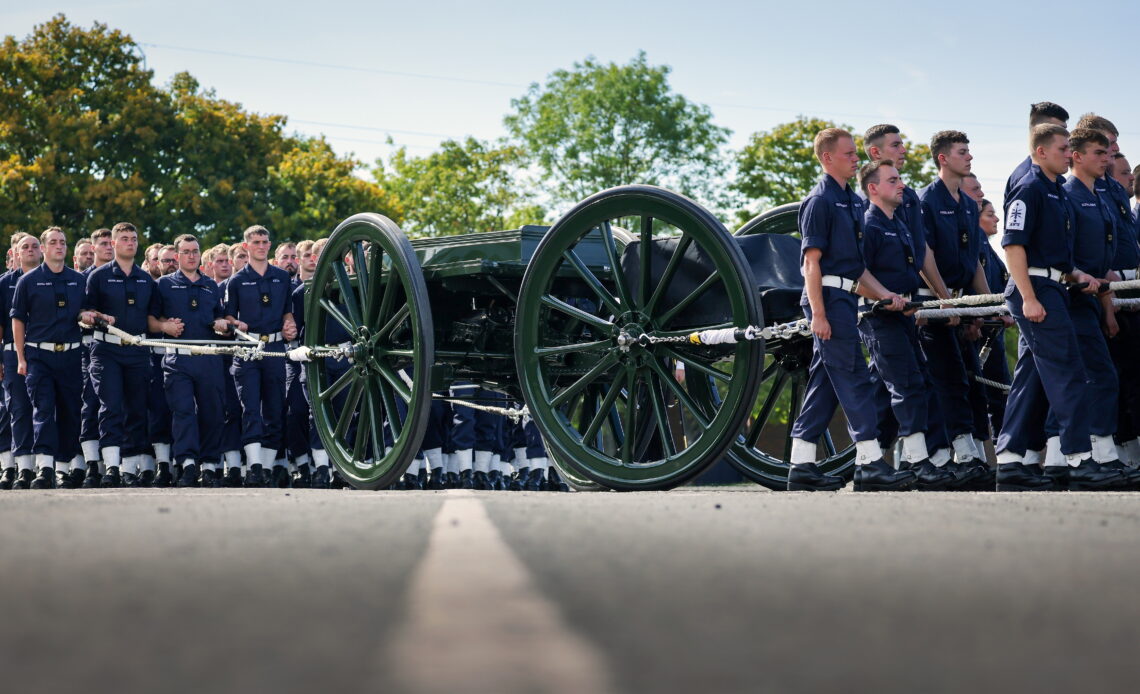
Buckingham Palace has announced details for the late Queen Elizabeth II’s funeral on Monday, and they are a mix of tradition and modern.
An element that definitely falls on the traditional side is the fact that the Queen’s coffin will be pulled on the State Ceremonial Gun Carriage, a piece that dates back to the late 1800s.
Originally, it was pulled by horses and used as an artillery piece during the war by the Royal Navy, who still own it and takes care of maintenance and cleaning.
It was retired from the field in 1901 with the name of Windsor Gun, because of its involvement in Queen Victoria’s funeral. A similar piece, the London Gun, was also used as a backup in case of malfunctions with the main carriage.
The State Ceremonial Gun Carriage weighs approximately two and a half tonnes, but can be moved easily by just three or four people, thanks to the structure, that allows for even weight distribution.
However, for Queen Elizabeth II’s funeral, it will be pulled by 144 people, divided between ratings and officers of the British Royal Navy. The Carriage is fit to be pulled by horses, but, since the Navy took this honour in 1901 for Queen Victoria’s funeral, they have been carrying it out with pride and are adamant not to give up the privilege of accompanying the Sovereign in their last journey. The piece has been used six times since then: Queen Victoria, King Edward VII, King George V, King George VI, as well as Winston Churchill and Lord Mountbatten all had their coffins carried on this historic piece.
The 144 men contingent will be divided between those actually pulling the carriage, which will be numbered at 98 people, with 6 standing by in case of emergency, and a further 40 people walking behind the Carriage to act as breaks.
This group will be just a small part of the more than 1000 members of the Royal Navy that will take part in the State Funeral – those also include the Band of the Royal Marines, that will perform music throughout the short journey from Westminster Hall to Westminster Abbey, where the State Funeral will take place, as well as the procession from Westminster Abbey to Wellington Arch, where the coffin will be transferred onto the State Hearse and brought to Windsor for the burial ceremony.
Not only has the Royal Navy carried out a crucial role in British history, but it is also something that Her Late Majesty has had a personal connection with: her husband, the Duke of Edinburgh, was a Navy Commander when he retired from service following his wife’s accession to the throne, and it is often said that Queen Elizabeth II loved her time as a Navy wife.

